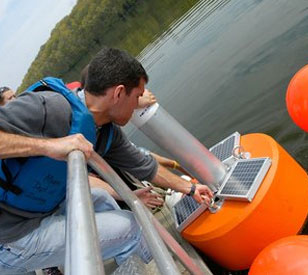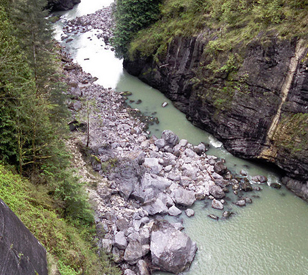Stormwater Monitoring

With an increase in the frequency of large storm events and a decrease in permeable surfaces, stormwater runoff can be a significant source of pollutants in surface waters like streams, rivers and lakes. Real-time monitoring systems can identify potential issues before they affect source water and help to track the efficacy of measures implemented to reduce the amount of stormwater.
Stormwater

Typical Stormwater Monitoring System
An effective stormwater monitoring system should provide real-time precipitation and flow data with alarms for early warning when threshold values are approached or exceeded. NexSens stormwater systems commonly include a tipping bucket rain gauge with open channel or non-contact flow meter and may optionally be expanded with additional water quality instruments.
For data logging, a mast-mounted NexSens X3 data logger can transmit data wirelessly in real-time via 4G LTE cellular or satellite communications to the WQData LIVE web datacenter, where data can be viewed and exported and alarms configured. The X3 logger is compatible with tipping buckets and most industry-standard flow sensors and includes multiple sensor ports to accommodate situations where various sensors are integrated into a single logging system.
The X3 logger is available with flexible mounting options including a convenient mast-mount option. Continuous operation is achieved with SP-series solar power packs.
Contact a NexSens Applications Engineer today to discuss your stormwater monitoring application.

Case Studies
Airport Stormwater Monitoring
The Federal Clean Water Act and National Pollutant Discharge Elimination System require that the Greater Orlando Aviation Authority use pollution prevention and abatement techniques at the Orlando International Airport. To meet the goals of the Clean Water Act and ensure the effectiveness of its stormwater pollution prevention plan, the airport has developed a stormwater monitoring program that includes a network of water quality and water level monitoring devices at strategic water resource locations around the airport.
Read MoreActon Lake Aquatic Classroom
Located just minutes away from Miami University in Oxford, Ohio, the tranquil and accessible Acton Lake is the perfect training ground for undergraduate and graduate students studying limnology. Not only is it close to campus, it also has a large watershed that makes it responsive to environmental disturbances and a long-term data set for reference. The reservoir serves as the emergency drinking water supply for the city of Oxford, is a productive fisheries site, and has been the subject of ongoing research for decades. Because the watershed around Acton Lake is predominantly used for agriculture, the streams and rivers that flow into the lake can bring in large concentrations of sediments and nutrients during storms, stimulating harmful algal blooms, hurting fisheries, and reducing the lake’s water quality.
Read MoreWashington Dam Hydrology Tracking
Near the small town of Concrete, Washington, there’s a dam on the Lower Baker River holding back its water. The dam is owned by Puget Sound Energy, a company that delivers electric power and natural gas to customers in the U.S. Northwest. For some time, the hydrology surrounding the dam has been of interest to engineers at the energy company who oversee its operations as part of a hydroelectric asset. In particular, they want to know how water moves in soils and rocks around the Lower Baker Dam.
Read More







